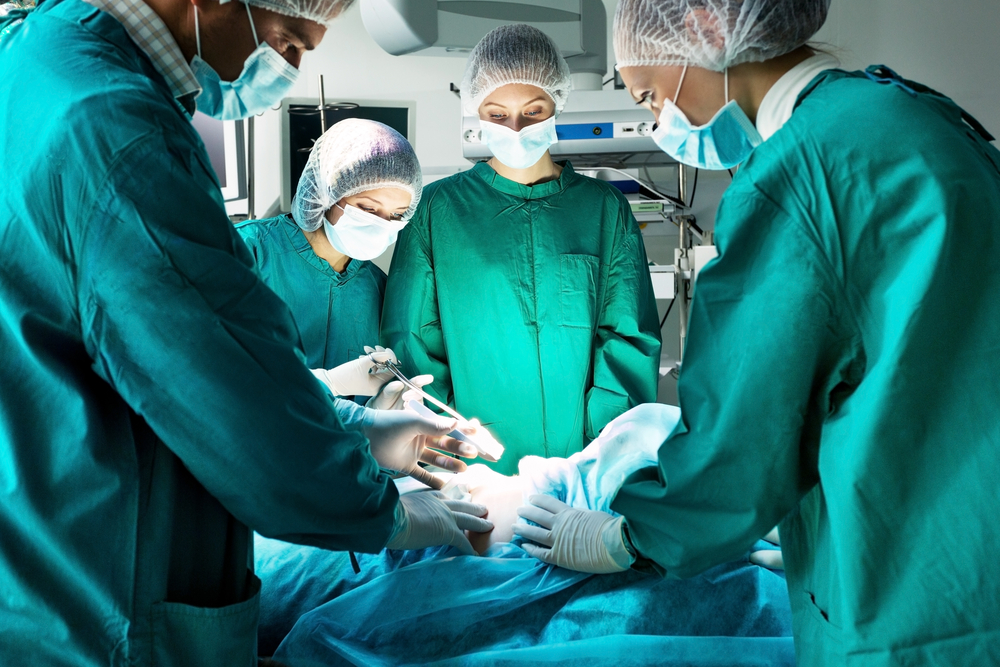Laparoscopic Adrenalectomy Is Effective and Safe for Treating Cushing’s Syndrome, Study Finds
Written by |

Kotin/Shutterstock
Laparoscopic adrenalectomy — the removal of the adrenal glands through tiny holes in the abdomen — is a safe and effective method for treating certain patients with Cushing’s syndrome, according to researchers.
Their study, “Effectiveness of unilateral laparoscopic adrenalectomy in ACTH-independent hypercortisolaemia and subclinical Cushing’s syndrome — a retrospective study on a large cohort,” was published in the journal Endokrynologia Polsksa.
Cushing’s disease results from a tumor of the pituitary gland, which secretes large amounts of adrenocorticotropic hormone (ACTH). ACTH, in turn, stimulates the adrenal glands to produce high levels of cortisol.
However, Cushing’s syndrome, or hypercortisolemia (high cortisol levels), is often caused by a cortisol-producing adenoma, such as a tumor of the adrenal gland. Hypercortisolemia can significant impair quality of life because it is associated with obesity, high blood pressure, diabetes, high levels of fats in the blood, osteoporosis, and depression.
In the past, cortisol-producing adrenal adenomas would have been removed using an open adrenalectomy — an open surgery with a six-to-12 inch incision in the abdomen, flank or back to remove an adrenal tumor.
Now, adrenal adenomas can be removed using laparoscopic adrenalectomy, in which a surgeon makes three or four 0.25-inch to 0.5-inch incisions and places a laparoscope — an instrument with a light and camera — through one of the incisions.
Laparoscopy has been dubbed the gold standard of care for removing cortisol-producing adrenal adenomas that are smaller than five centimeters.
Some recent studies have reported that laparoscopy can also be beneficial in patients with subclinical Cushing’s syndrome, referring to a disease characterized by high cortisol production without specific signs and symptoms of Cushing’s syndrome.
However, there is a need to validate the procedure as a symptomatic treatment for ACTH-independent Cushing’s syndrome and subclinical Cushing’s syndrome. These are two variants of Cushing’s syndrome where standard drug treatment is often not effective but a laparoscopic approach seems too radical.
Additionally, there is also controversy surrounding whether the procedure should be performed for larger tumors, those greater than five cm. There is limited data available on large tumor laparoscopic adrenalectomy, and so it’s up to the discretion of the surgeon whether they chose to perform open or laparoscopic surgery.
Researchers conducted a retrospective, long-term follow-up study to determine whether laparoscopy could be used as a treatment for Cushing’s syndrome, with tumurs both smaller and larger than five cm.
Researchers analyzed 25 patients with ACTH-independent Cushing’s syndrome and 19 patients with subclinical Cushing’s syndrome who underwent laparoscopic adrenalectomy.
Patients from both groups, a total of 44, underwent a unilateral transperitoneal (performed through the peritoneal cavity in the abdomen) adrenalectomy. From these patients, 42, or 93.3%, had good early outcomes.
There were some adverse events observed across the two groups. One patient had to undergo an additional laparoscopic surgery the same day due to bleeding.
At the 22nd day post-surgery, a second patient was found to have an abscess at the site of the removed adrenal gland, which was drained using a laparoscope.
Three obese patients suffered from temporary respiratory insufficiency — difficult breathing and fever — of different severities.
All patients with symptoms of Cushing’s and nine patients with subclinical Cushing’s syndrome experienced adrenal insufficiency after the surgery, which is characterized by low levels of adrenal hormones.
“Transperitoneal unilateral laparoscopic adrenalectomy is an efficient and safe treatment option in patients with ACTH-independent [Cushing’s syndrome],” both in patients presenting symptoms of the disease, and those without symptoms, researchers concluded.





